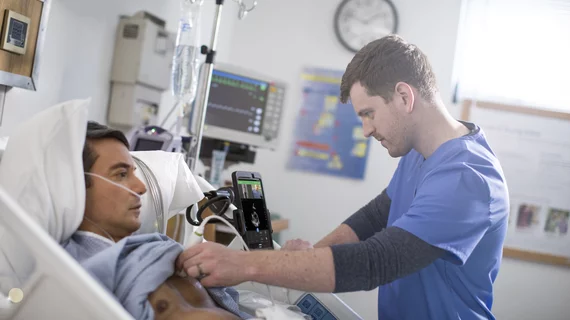Internists harnessing point-of-care ultrasound help drop downstream radiology referrals
Putting point-of-care ultrasound into the hands of internal medicine specialists helped drop the use of other downstream imaging exams.
That’s according to a new analysis published Monday in the European Journal of Internal Medicine. Scientists with the Luigi Sacco Hospital in Milan, Italy, recently evaluated putting POCUS in internists’ hands, testing whether it would help to drop orders of other tests such as chest x-rays, abdominal US, echocardiography and CT.
Lead author Marco Barchiesi, MD, and colleagues conducted the interventional study with patients admitted to LSH’s internal medicine ward between April 2016 and October 2017. Over the course of those four months, they alternated each month between allowing POCUS and not, comparing data between the two periods.
All told, internists ordered 113 diagnostic tests during those “on” months versus 329 during the “off” period. Meanwhile, the odds of getting referred for a chest x-ray were 87% lower during the US months, with the risk of receiving chest CT and abdominal US also dropping.
“The main result of the present study is that the use of POCUS in an internal medicine ward is associated with a significant reduction of echocardiographic, chest x-ray, chest CT scan and abdominal ultrasound examinations,” concluded Barchiesi and colleagues. “The possibility to reduce diagnostic examinations can theoretically lead to economical savings by sparing money related to the cost of the procedures themselves, and the cost of the transportation of patients to departments where the exams are performed,” the team added later.
Read more of the analysis, including possible limitations, in the European Journal of Internal Medicine here.

